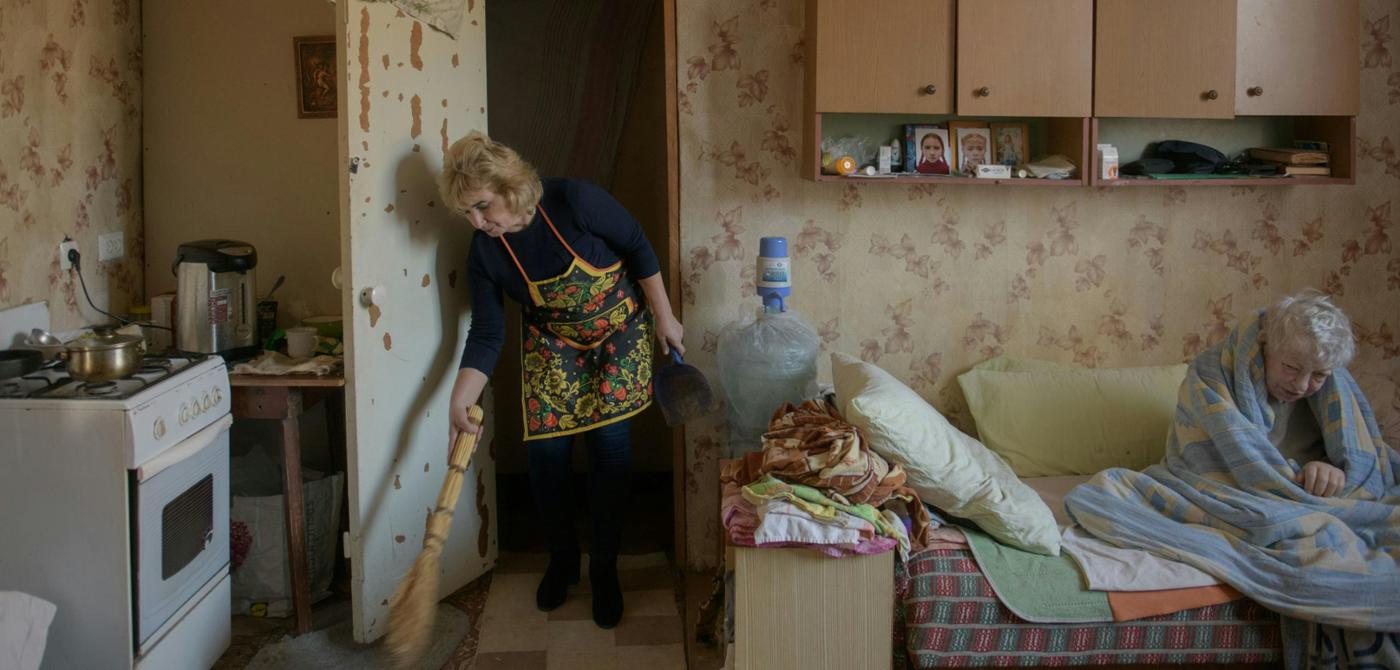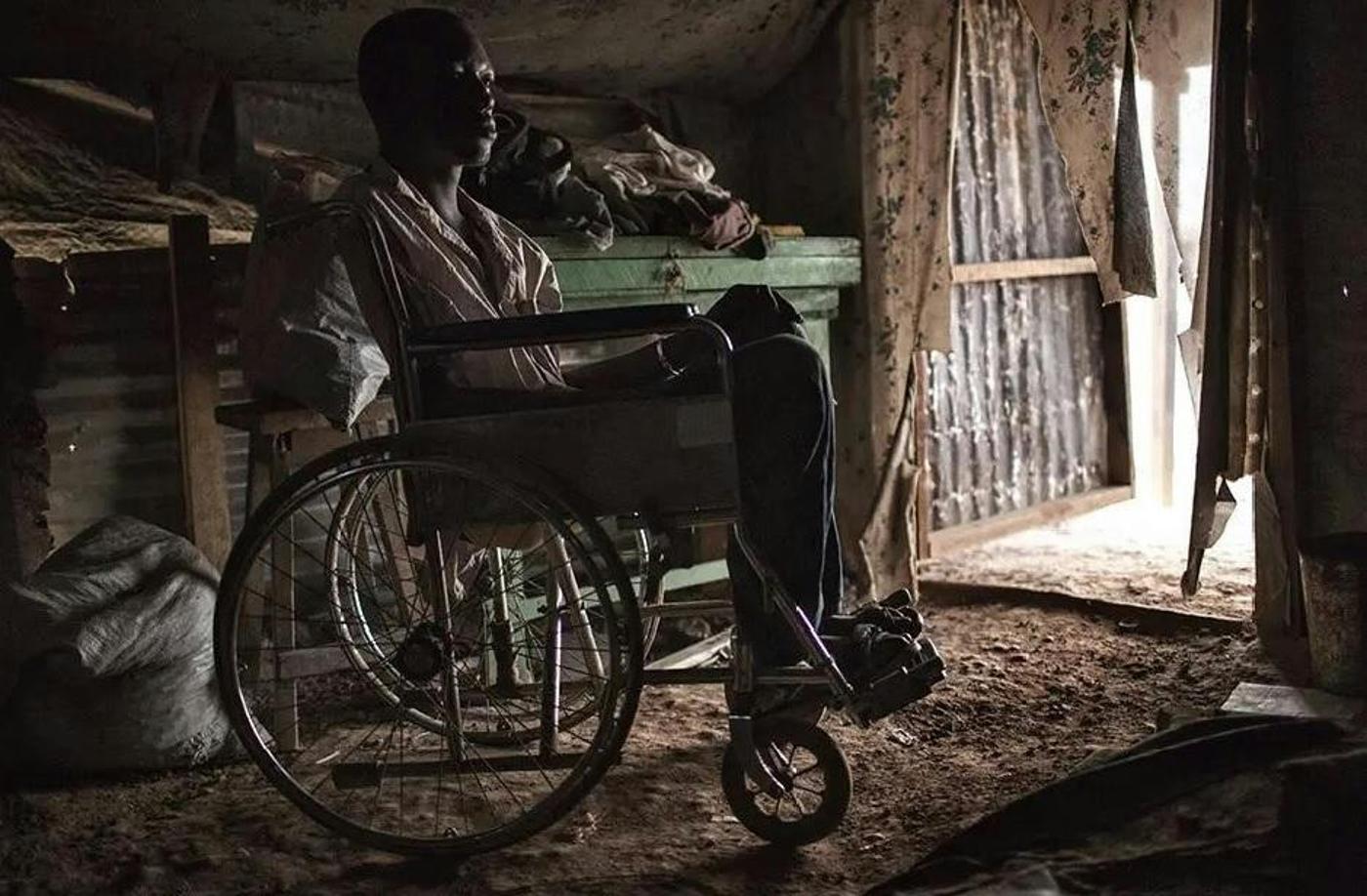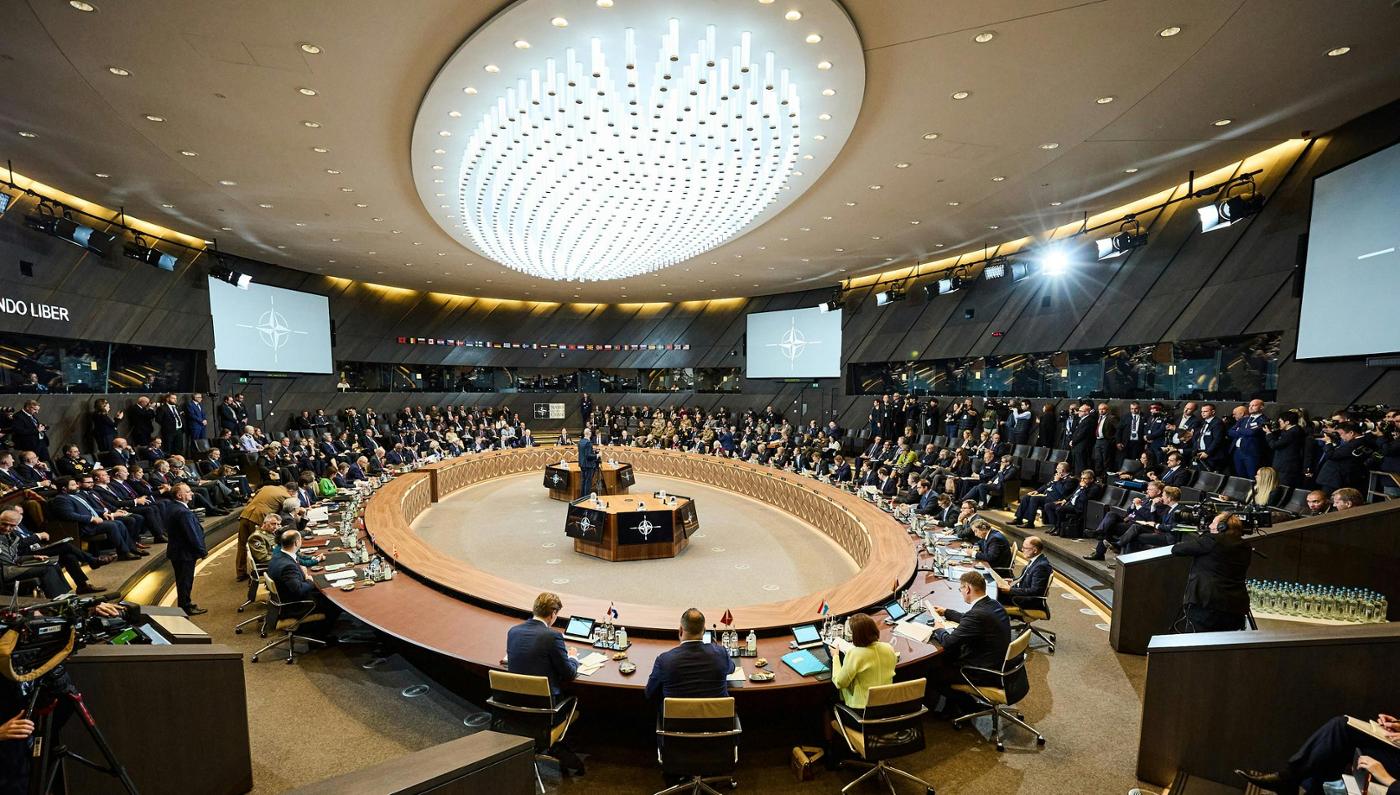The United Nations International Day of Persons with Disabilities is celebrated every year on December 3rd. This year, the international community is also celebrating the 75th anniversary of the adoption of the Geneva Conventions of 1949.
The Geneva Conventions are cornerstones of international humanitarian law that came in the wake of World War II and the Holocaust, when hundreds of thousands of persons with disabilities were exterminated alongside Jewish people and other minorities. The Nuremberg tribunal found that the mass killing of persons with disabilities during World War II constituted a crime against humanity, and thus gave explicit recognition to persecution based on disability. Individuals with disabilities were highly at risk during the Nazi reign of terror, in part due to their segregation from society and the resulting isolation from their communities. Often locked away in dismal institutions, it was not difficult for persecutors to locate individuals marked as disposable by Hitler’s regime. The ongoing isolation of persons with disabilities increases their risk in times of conflict, as reported on by organisations such as Disability Rights International. Recent conflicts in South Sudan, Syria and Ukraine expose that such isolation, together with disability-based stigma, reinforces inequalities for persons with disabilities caught in armed conflict.
Russia’s war of aggression against Ukraine demonstrates the precarity of individuals with disabilities in conflict. Credible reports detail the abandonment of persons with disabilities in institutions under attack, how evacuation shelters are often inaccessible, and humanitarian assistance can be difficult to access. They also expose the need to support the reintegration of survivors of armed conflict, both soldiers wounded in battle and impacted civilians. And yet we know that reconstruction post-conflict is made more viable if the ethic of inclusion replaces an ethic of distrust. Persons with disabilities are important agents of such change and disability is so often the bridge that brings people from different sides of a conflict together because they find common ground in the experience of disability.

Russia’s war of aggression against Ukraine demonstrates the precarity of individuals with disabilities in conflict, and exposes the need to support the reintegration of survivors of armed conflict, both soldiers wounded in battle and impacted civilians. Photo © Amnesty International
NATO does not, at this juncture, have a policy for the protection of persons with disabilities in conflict. Nonetheless, advancing the United Nations Disability, Peace and Security agenda is an important extension of NATO’s efforts to strengthen its human security approach related to the protection of civilians in armed conflict, and with Allied efforts to advance the human rights of persons with disabilities in peace and in conflict. We recommend that actions should include: 1) explicit recognition by NATO that armed conflict has a disproportionate impact on persons with disabilities and that persons with disabilities are important actors in peace and security; 2) commitment to integrating the core provisions of UN Security Council resolution 2475 on the protection of persons with disabilities in armed conflict into NATO policies; 3) development of a Disability, Peace and Security Policy by NATO Heads of State and Government to guide NATO’s work; and 4) engagement by NATO’s Civil Society Advisory Panel with organisations for persons with disabilities.
A disability-related protection agenda for the 21st century
The protection of persons with disabilities in times of armed conflict now sits squarely on the international agenda, but this has not always been the case. One result of decades, if not centuries, of understanding persons with disabilities as “objects” — even as objects of protection — is that their human agency, autonomy, and right to be involved in decisions affecting their lives, as well as the broader aspects of communal life, were discounted.
The 2006 adoption of the United Nations Convention on the Rights of Persons with Disabilities (CRPD) began to codify the shift toward a human rights-based social model of disability, which recognised persons with disabilities as rights-holders and agents of change.
Regarding armed conflict and other “situations of risk,” CRPD Article 11 provides that: States Parties shall take, in accordance with their obligations under international law, including international humanitarian law and international human rights law, all necessary measures to ensure the protection and safety of persons with disabilities in situations of risk, including situations of armed conflict, humanitarian emergencies and the occurrence of natural disasters.
Despite Article 11’s legal obligations, in 2007, one year after the adoption of the CRPD, the UN Secretary-General reported on the disproportionate impact of armed conflict on persons with disabilities, and the lack of consideration for the specific risks that they face in times of conflict. More recent evidence from the Central African Republic to Yemen to Gaza supports these findings. For example, in 2018, UNICEF reported that during armed conflict, children with disabilities are more likely to be separated from their caregivers, especially during attacks or displacements, making them more susceptible to abduction or recruitment into armed groups.

Despite Article 11’s legal obligations in the Convention on the Rights of Persons with Disabilities (CRPD), persons with disabilities continue to face disproportionate risks during armed conflict, including in the Central African Republic. Photo © Marcus Bleasdale for Human Rights Watch
The UN is taking notice and is taking action to advance Article 11 in tangible ways. In 2019, the UN Secretary-General’s annual report on the protection of civilians in armed conflict called for increased protection of and assistance to persons with disabilities impacted by conflict. Shortly thereafter, the UN Security Council adopted Resolution 2475 in June 2019, which both affirms the specific obligations and protections that should be given to persons with disabilities during armed conflict, and articulates a broad-based protection agenda. This resolution provides the framework for a new Disability, Peace and Security agenda. It serves to raise awareness about the disproportionate impact of armed conflict on persons with disabilities, highlighting actionable priorities, including the need for safe, timely and unimpeded humanitarian access to all people in need of assistance in conflict zones; ensuring equal access to basic services for persons with disabilities; and preventing violence and abuses against them during armed conflict. It likewise calls for accountability for criminal acts directed at or impacting persons with disabilities, and for the participation of persons with disabilities in finding peaceful solutions to security challenges.
Elements of these themes were elaborated in three successive reports issued by the then UN Special Rapporteur on the Rights of Persons with Disabilities, Professor Gerard Quinn, laying out the protection agenda along the peace and conflict continuum. As the Special Rapporteur emphasised, there are many largely unsung examples of the positive contributions of persons with disabilities in peacebuilding (for instance in Northern Ireland, Uganda and South Africa) which show that persons with disabilities have been active agents of change in some peacebuilding processes in ways that helped bridge divides between persons on different sides of the conflict. It therefore makes sense to make more intentional space for the active involvement of persons with disabilities.
Other organisations are beginning to advance the aims of UNSCR 2475, including Human Rights Watch, which has increased its reporting on persons with disabilities in conflict zones. Engagement by the US International Council on Disabilities and the University of Baltimore’s Center for International and Comparative Law is amplifying how lessons from the Gender, Women, Peace, and Security, Youth Peace, and Security and Children Affected by Armed Conflict can inform strategies to better integrate a disability protection agenda into the peace and security framework.
Scholarship establishing the clear connection between the Convention on the Rights of Persons with Disabilities (CPRD) and the regimes of international law that can be harnessed to shore up the protection of persons with disabilities in situations of risk has been emerging. This includes the published works of the Harvard Law School Project on Disability on the need for better protection of persons with disabilities in the conduct of hostilities, for instance through accessible warnings, accessible shelters, and accessible means of evacuation, and better accountability for harms perpetrated against them.
There is much in the framework of the CRPD that can and should be leveraged to advance the protection of persons with disabilities all along the peace and conflict continuum. This is beginning to occur in real and tangible ways. The World Bank, for example, elevated these issues in its revised Disability Inclusion and Accountability Framework in 2022, and the International Committee of the Red Cross is integrating disability throughout its work, drawing on the connections between the CRPD and the protection regime under international humanitarian law.
What NATO could do to support the Disability, Peace and Security agenda
While no mention of a disability-specific peace and security agenda is made in NATO’s Washington Summit Declaration, paragraph 1 of the Declaration reaffirms NATO’s commitment to “individual liberty, human rights, democracy and the rule of law”. It is imperative that NATO Allies and partners share information and foster discussions on the integration of disability perspectives into specific military operations and activities to ensure that the Disability, Peace and Security agenda connects with other protection agendas, including Women, Peace and Security (WPS). It is also necessary to tie in discussions of disability inclusion into NATO’s Allied Command dialogues. There are many areas where such dialogue could inform NATO’s work, whether in relation to Multi-Domain Operations in the Urban Environment, lessons identified from the war in Ukraine, or the Warfare Development Agenda. The active integration of disability perspectives into these critical areas by NATO will ensure a more comprehensive and effective approach to global security challenges.
Some 75 years after its creation, and in alignment with existing policies on WPS and human security, it is timely for NATO to address the protection of persons with disabilities as well as to ensure their participation in NATO’s work, reflecting the Alliance’s commitment to inclusive security and democratic values. Consensus around these issues is possible. Nearly all NATO member countries are already parties to the CPRD, have robust disability law and policy frameworks, and affiliate themselves with the principle of including persons with disabilities in democratic decision-making processes.

Nearly all NATO member countries are already parties to the CPRD, have robust disability law and policy frameworks, and affiliate themselves with the principle of including persons with disabilities in democratic decision-making processes. However, NATO should work to advance a Disability, Peace and Security agenda. Photo © NATO
Several actions are advised to advance a Disability, Peace and Security agenda within NATO. These include:
Commitment to integrating the core provisions of UNSCR 2475 into NATO policies, with focuses on the protection of persons with disabilities in armed conflict, and with explicit recognition that armed conflict has a disproportionate impact on persons with disabilities; that persons with disabilities are important actors in peace and security; and that including disability perspectives into the work of the Alliance is an imperative.
Advancement of disability equality as a reflection of NATO’s values, along the lines of how the 2022 Strategic Concept — the Alliance’s guiding document — emphasises the cross-cutting importance of integrating WPS across NATO’s core tasks.
Designation of a focal point for NATO’s work in this domain with adequate resources, including staffing and funding to access key stakeholders representing the voices of persons with disabilities.
Development of a Disability, Peace and Security Policy as part of NATO’s existing Human Security Agenda by NATO Heads of State and Government, to guide NATO’s work on a Disability, Peace and Security agenda. This should include disability-competent leadership, which takes into account the views of persons with disabilities and their representative organisations.
Engagement by NATO’s Civil Society Advisory Panel with organisations representing persons with disabilities, to shape policy and practices on the basis that disability equality is an important dimension of NATO’s cooperation with other international organisations, including the United Nations and the Organization for Security and Co-operation in Europe.
Persons with disabilities are now, belatedly, recognised as an at-risk population during armed conflict and its aftermath. UNSCR 2475 provides the framework for NATO to recognise the protection of persons with disabilities in much the same way the Alliance considers the protection of women and children in risk situations. Explicit recognition of the impact of armed conflict on persons with disabilities by NATO, coupled with a commitment to integrate the core provisions of UNSCR 2475 into NATO policies is a natural extension of NATO’s efforts to strengthen its human security approach and Allied efforts to advance the human rights of persons with disabilities in peace and in conflict.
